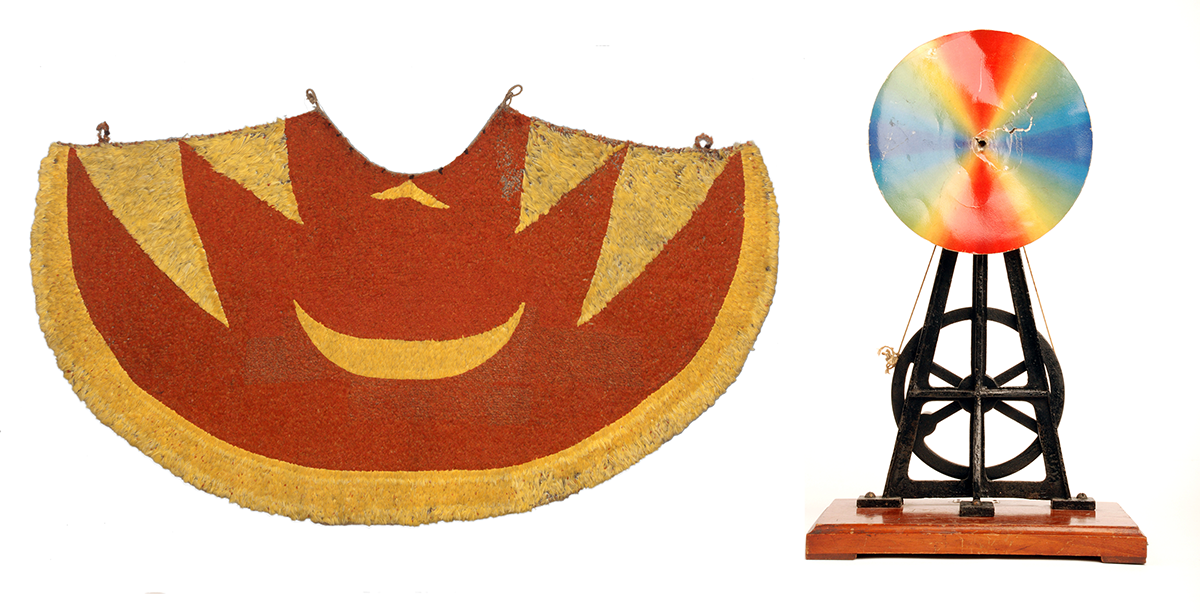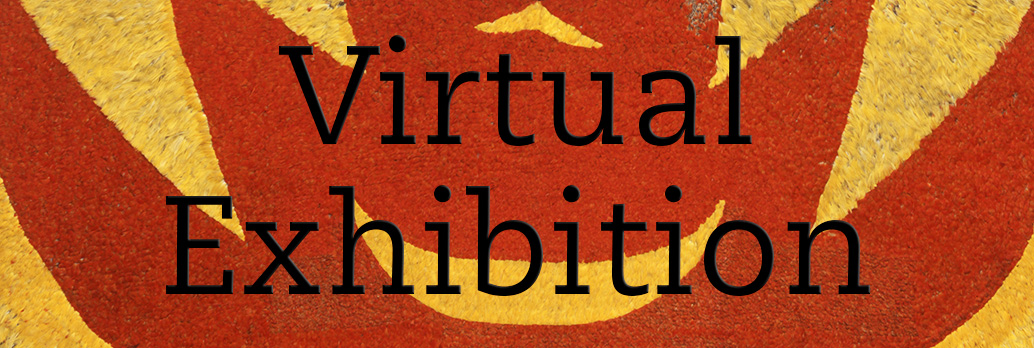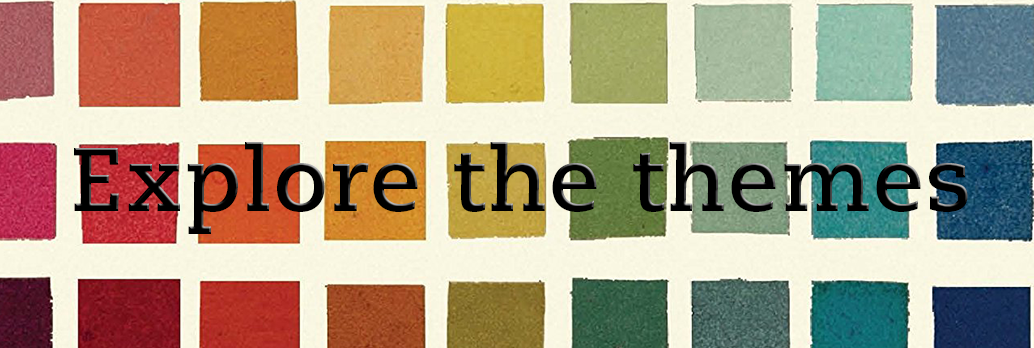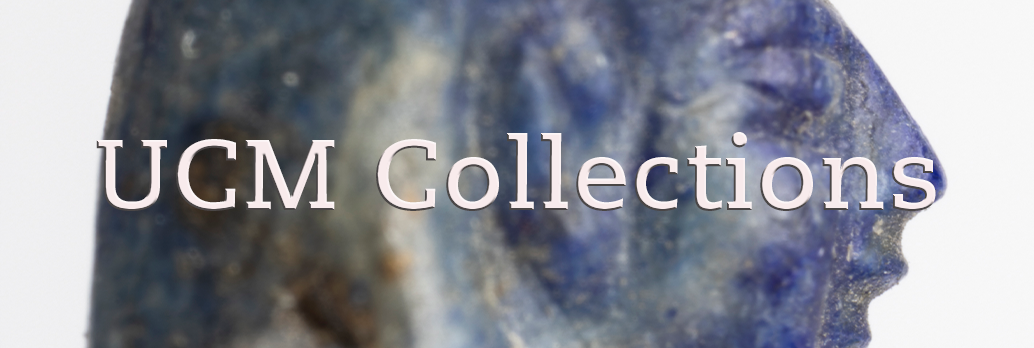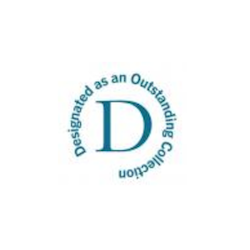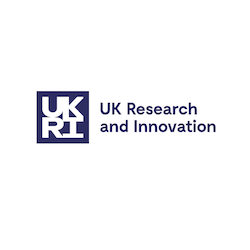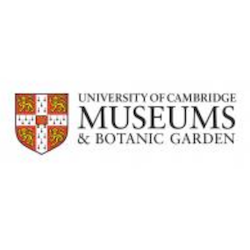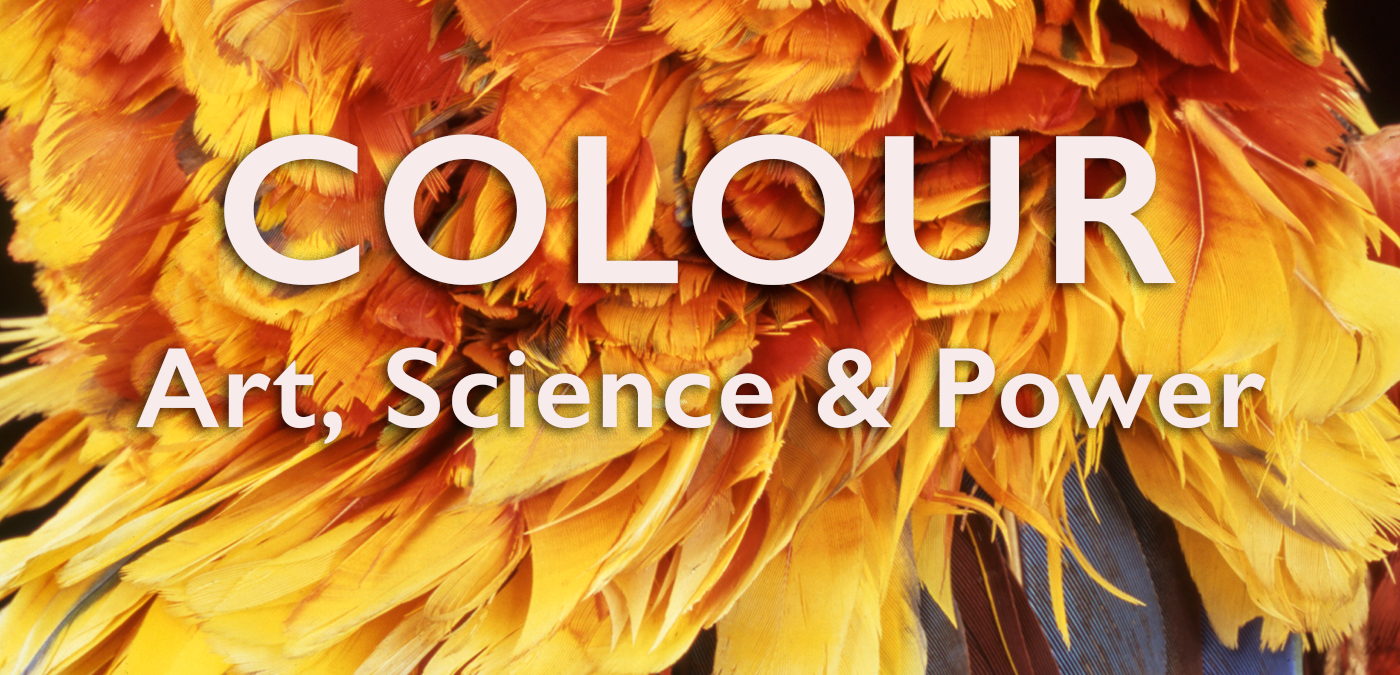
ARCHIVED EXHIBITION
26 July 2022 - 23 April 2023
Li Ka Shing Gallery, Museum of Archaeology and Anthropology
Free entry
About the exhibition
COLOUR: Art, Science & Power is our exciting current exhibition at the Museum of Archaeology and Anthropology. The displays harness the allure and power of colour to inspire reflection and creativity.
The exhibition integrates insights from anthropology, the arts, humanities and the sciences, bringing together extraordinary objects and artworks from different times and places. COLOUR showcases remarkable and diverse collections from across the University of Cambridge museums, libraries and colleges. Material on display includes paintings, artists materials, medieval manuscripts, ancient Egyptian figures, African sculpture, Amazonian feather headdress, textiles, a royal Hawaiian cape made of hundreds of thousands of shimmering feathers, scientific instruments, rainbow flags, iridescent shells, mineral specimens and much more!
'Ahu 'ula, Royal Hawaiian Feather Cloak. MAA Z 6140
Colour Wheel. 19th century. Used to test colour perception. Whipple Museum of the History of Science 4421
COLOUR aims to engage diverse audiences and encourage people to explore different ways that colours are perceived, experienced and given meaning. After the dark days of the pandemic, the exhibition provides an opportunity for creative activities, sensory engagement and fun interactives. Perception quizzes reveal the extent to which colour is in the mind, yet colours are also material substances that we experience and interact with in our daily lives.
Preparations have been developed in consultation with numerous specialists and Indigenous colleagues from around the world as well as with local community and student groups.
COLOUR: Art, Science & Power - Virtual Exhibition
Can't make it to the museum, or want to explore the exhibition from the comfort of your sofa? Explore the themes and be fascinated by the power of colour in a virtual exhibition format.
Click here to explore the virtual exhibition.
COLOUR is organised into overlapping themes.
Underlying the exhibition is a focus on materiality and the different ways that people use colour to make sense of the world around them. Colour influences our emotions, activities and relations with others. Colour has the power to enchant and transform both people and things.
The Experience of Colour is highlighted at the entrance with a specially commissioned artwork, Kaleidoscope, by the Cambridge Yarn Collective, whose work foregrounds the association between colour and wellbeing.
The Perception of Colour juxtaposes scientific ways of understanding colour with Indigenous perspectives, from Newton's use of prisms to reveal colours in apparently white light to an Australian Aboriginal bark painting depicting intimate connections between land, colour and ancestral power.
Colour & Desire explores the enormous effort that people over millennia have put into producing and obtaining particular colours. Colour has been laboriously extracted from the earth, plants and animals, squeezed from the glands of molluscs and from the 1850s produced from coal tar. The processes involved are often highly skilled, smelly and sometimes dangerous. Local economies have been built on the basis of colour production and undermined by shifts in fashion.
The Power of Colour reveals the potency of different coloured substances. Colour also has profound and far-reaching political implications. Particular colours have been identified with and often restricted to political elites. Colour can be used as a means of empowerment or deployed to categorise and discriminate against particular groups of people.
The Explosion of Colour: With the development of cheap commercial dyes, most people today have access to a seemingly infinite range of colours produced, classified and marketed by multi-national chemical corporations. The exhibition concludes by inviting visitors to reflect on how this explosion of colour has transformed people’s experience, creativity and understanding of the world around them.
Making Kaleidoscope
We were delighted to work with the Cambridge Yarn Collective to create a specially commissioned artwork, Kaleidoscope, for the opening section of the exhibition. Their work foregrounds the association between colour and wellbeing, and invites you into the space with an explosion of colour.
Hear from the Cambridge Yarn Collective about their work, the process of making Kaleidoscope, and crochet as a heritage craft, below.
Discover More
If you would like to find out more about COLOUR then you can download the exhibition catalogue for free here:
This catalogue was written by Dr Anita Herle, MAA's Senior Curator in Anthropology, who led the multidisciplinary project which culminated in the COLOUR exhibition.
From the University of Cambridge Museums - coming soon
COLOUR is a cross-disciplinary exhibition, drawing from the collections of museums and galleries across Cambridge. Explore resources and find out more about objects from UCM collections, from Newton's prisms to Emma Amos' art.
Acknowledgements
COLOUR: Art, Science & Power was curated and designed by Anita Herle with Research Assistant Tom Crowley. We are extremely grateful to the many people who generously contributed to this collaborative research and exhibition project.
The exhibition showcases remarkable and diverse collections from across the University of Cambridge museums libraries and colleges. We thank our University colleagues who assisted with advice and technical assistance for the loans.
Fitzwilliam Museum: Vicky Avery, Edward Cheese, Anastasia Christophilopoulou, Jo Dillon, Louise Jenkins, Olivia Maguire, Andrew Maloney, Jane Munro, Suzanne Reynolds, Elena Saggers, Neil Spencer, Helen Strudwick and Luke Syson.
Hamilton Kerr Institute: Spike Buckley, Sarah Harrop and Adèle Miranda Wright.
Kings College: Provost and Scholars.
Kettle's Yard: Andrew Nairne and Eliza Spindel.
Museum of Classical Archaeology: Susanne Turner and Caroline Vout.
Polar Museum: Charlotte Connelly and Alex Partridge.
Sedgwick Museum: Liz Hide, Dan Pemberton, Matt Riley and Emma Turvey.
Murray Edwards College - The Women's Art Collection: Dorothy Byrne, Sarah Greaves, Harriot Loffler and Naomi Polonsky
University of Cambridge Museums (UCM): Hana Bristol, Jen Bull, Niki Hughes, Jo McPhee, Danika Parikh and Sophie Rowe.
Whipple Museum of the History of Science: Morgan Bell, Steve Kruse, Joshua Nall and Liba Taub.
University Museum of Zoology: Jack Ashby, Michael Brooke, Daniel Field, Natalie Jones, Richard Preece, Russell Stebbings and Edgar Turner.
Balfour & Newton Libraries, Department of Zoology: Jane Acred.
Deborah Wickham developed and produced the graphic design for the exhibition. Information panels and labels were printed and mounted by Adrian Newman and Ian Bolton at the Anatomy Visual Media Group.
The artwork Kaleidoscope was designed and created especially for the entrance to the exhibition by the Cambridge Yarn Collective - Hilary Butler, Clare Collier, Sophie Neville and Dorothy Singer.
Exhibition preparations were developed in consultation with numerous specialists, including Indigenous colleagues from around the world as well as local community and student groups. Particular thanks to Spike Bucklow, Jane Munro, Joshua Nall and Simon Schaffer, who provided advice, encouragement and support over many years. Leah Caldeira and Hawaiian colleagues at the Bishop Museum in Honolulu co-curated the display for the 'Ahu 'ula, Hawaiian feather cloak.
Initial guidance was provided by the UCM Community Panel. Members of the University of Cambridge Students' African & Caribbean Society, Zarah Ali and Stanley Onyemechalu, as well as Meghan Mills Amissah, Jane Pettitt and Shereese Peters Valton contributed to workshops exploring the use of colour to categorise, discriminate and empower particular groups of people. The section 'Beyond Rainbow Flags' was developed with members of QTI - Rose Colaço, Jade Pollard Crowe, Ange La Furcia, Elmira Zadissa and Ramona Zadissa. Advice for the film presentation on Holi was provided by Thomas Awad of the University of Cambridge Hindu Cultural Society. Andrew Burn and David Salter of the Arthur Bliss Society assisted with procuring Bliss's music, A Colour Symphony.
Specialist advice was also contributed by Alice Christophe, Benja Dadzie, Rosa Dyer, Sudeshna Guha, Joshua Fitzgerald, Lauren Gordon, Theodora Hadjimichael, Stephen Hugh Jones, Matthew Oates, Christopher Pinney, Marilyn Strathern, Lianming Wang and David Wilson.
MAA staff across the museum contributed to the production of the exhibition. Matt Buckley and the workshop team Milenko Basic, Aran Lomas and Mark Hazlegrove; Conservation: Ayesha Fuentes and Kirstie French; Curatorial: Mark Elliott, Jimena Lobo Guerrero Arenas; Collections: Rachel Hand, Flo Sutton and Eleanor Wilkinson; Communications: Caitlin Brooker; Learning: Sarah Jane Harknett, Rob Law and Shereese Peters Valton; Photography: Jos Dudding; Front of House: Petra Birkett, Gerard Davis, Saskia Burr, Julia Norman and Kate Phizacklea; Administration: Wendy Brown and Melanie Hugow; Centre for Material Culture: Lucie Carreau, Veronika Lorenser, Eleanor Beestin-Sheriff, Samantha Daisley, Katrina Dring, Lizzy Peneycad, Jane Pettitt, Louise Puckett, Emily Shorter, Lily Stancliffe and Annie Tomkins.
Support for the exhibition was provided by a Cambridge Humanities Research Grant and MAA's Crowther-Beynon Fund. The Albany paints used throughout the gallery were generously donated by Brewers Decorator Centres.


